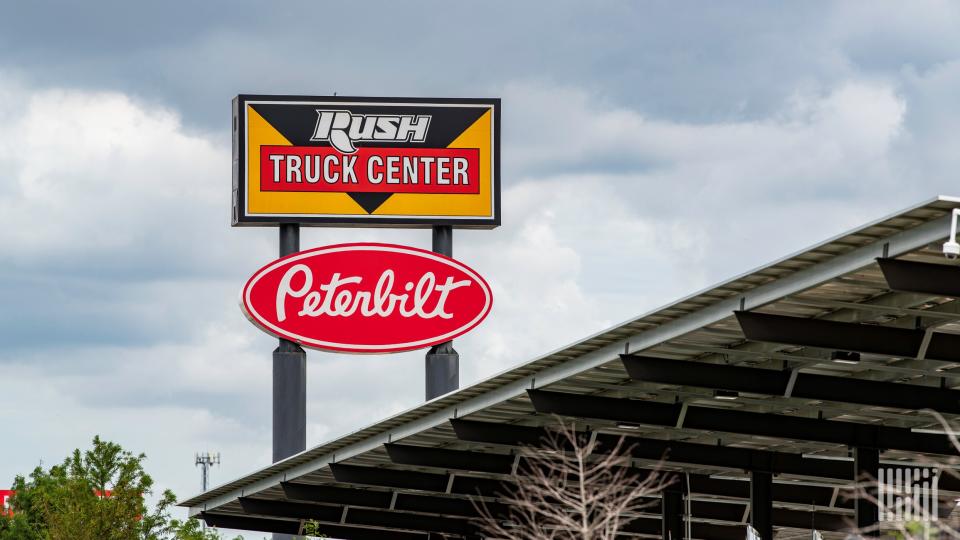Rush Enterprises keeps momentum in softening Class 8 aftermarket

High interest rates and low freight rates slowed the growth of Class 8 aftermarket sales at Rush Enterprises in the third quarter. But the nation’s largest network of truck dealerships found plenty of offsets to support strong overall results.
Class 8 truck sales rose 3% compared with a year ago, a period of severe constraint as OEMs began to meet pent-up demand that mushroomed during the pandemic.
“Our over-the-road customers … are being negatively impacted by high interest rates, and low freight rates,” said W.M. “Rusty” Rush, CEO, company chairman and president. “These conditions, along with rising fuel prices, which are especially difficult for small carriers to navigate, [escalated] in the third quarter and slowed aftermarket growth across the industry.”
Rush sold 4,326 new Class 8 trucks, mostly Peterbilt and Navistar International models. That accounted for 6.1% of the U.S. market and 2.1% of the new Canadian market.
The company sold 3,244 new Class 4 through 7 medium-duty commercial vehicles in Q3, up 0.7% compared to the third quarter of 2022. That represented 4.8% of the U.S. and 2.3% of Canada’s Class 5 through 7 new commercial vehicle market.
‘Operating within the confines of truck allocation’
Increased production helps, but some body companies lag in completing upfits of medium-duty trucks, Rush said.
“In the third quarter, we were still operating within the confines of truck allocation. But new truck production continued to improve, resulting in significantly shorter lead times for new truck purchases,” Rush said.
Strong demand in the refuse, public sector, wholesale and energy segments offset flattening over-the-highway Class 8 aftermarket revenues. Used truck pricing and demand will likely remain slack as values continue to decline at an accelerated rate. The rate of decline decreased in Q3.
“We are well positioned to strategically manage our inventory and pricing to get through these challenges,” Rush said. The company capped its purchase of used trucks in February, preferring to wait for prices to rebound.
Though slowing, aftermarket products and services accounted for approximately 59% of the company’s gross profits in Q3. Parts, service and collision center revenues totaled $643.6 million, up 3.5% compared to the third quarter of 2022.
Overall, Rush reported gross revenues of $1.98 billion, a 6.2% increase from gross revenues of $1.86 billion in the year-ago quarter. Q3 net income was $80.3 million, or 96 cents per diluted share, compared to net income of $90.4 million, or $1.06 a year earlier.
Class 8 aftermarket pressure may worsen
The pressure on the Class 8 aftermarket business may worsen before it improves.
“Moving forward, we expect that aftermarket revenues will continue to be negatively impacted by economic conditions affecting over-the-road customers, and we also believe that the industry may experience some deflation with respect to the prices of certain commodity parts,” Rush said in a news release.
The Q3 absorption ratio of 132.8% compared to 136.2% a year ago. Absorption ratio reflects how much operating cost is covered by fixed operations such as service, aftermarket parts and collision repairs. Anything above a 100% absorption ratio becomes profit.
Related articles:
Rush Enterprises plans 3:2 stock split following strong Q2
Falling used truck prices push largest dealership network to sidelines
Parts sales drive Q1 profits at Rush Enterprises
Click for more FreightWaves articles by Alan Adler.
The post Rush Enterprises keeps momentum in softening Class 8 aftermarket appeared first on FreightWaves.
